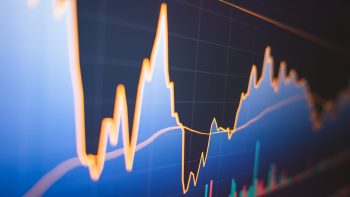‘Tis the season to review winter’s GDP
The U.S. economy grew 2.3 percent in the second quarter. But that wasn’t the most interesting item in Thursday’s quarterly update on the economy from the Commerce Department.
It turns out that America’s gross domestic product grew at 0.6 percent in the first quarter. Previously, Commerce had said the economy shrank 0.2 percent. The difference is basically in how the government made seasonal adjustments to those numbers.
To understand how this works, we start with a guy who sells diamond rings.
Break GDP down, all the way down, and you have regular people buying and selling stuff, like Bob Capace, who owns Worthington Jewelers in central Ohio. He knows something about seasonality.
“Normally we’re gonna do about double in December what we would do in January,” he says.
He doesn’t panic every January when his jewelry business drops by half, because he knows sales peak for the holidays. He adjusts how he views the numbers so he’s comparing apples to apples. Economists do something similar looking at economic activity, which also slows in winter.
“We don’t want to learn from our data that winter just happened, because we already know that,” says Justin Wolfers, senior fellow at the Peterson Institute for International Economics. “We want to know, relative to other winters, how well is the economy doing. That’s what seasonal adjustment does.”
Wolfers and others have recently been asking questions about consistently weak first quarter numbers.
“Over the last several years, we’ve noticed that estimates seemed to be underestimating the first quarter GDP regularly,” says Beth Ann Bovino, U.S. Chief Economist for Standard & Poor’s.
This is where it’s important to remember that GDP is not just cold numbers cranked out by machine. Humans tell the computers how to crunch the numbers. One of them is Nicole Mayerhauser, chief of the National Income and Wealth Division at the Commerce Department’s Bureau of Economic Analysis, where the GDP report comes from.
“We wanted to dig into those patterns and start to see if we could find anything,” Mayerhauser says.
It turns out that they did. Exactly how the government economists reacted to what they found is complicated and technical, but a key change is how they account for defense spending. Today’s adjusted GDP numbers are among the highest profile new moves in the maddening quest to answer the question: How is the economy doing?
“It’s a continuation of an approach that we’re constantly pursuing, which is making sure we are seasonally adjusting the data as best we can,” Mayerhauser adds.
Whether you’re selling engagement rings or measuring the whole economy, one needs to look at the data carefully, so it’s clear when it’s time to freak out.
There’s a lot happening in the world. Through it all, Marketplace is here for you.
You rely on Marketplace to break down the world’s events and tell you how it affects you in a fact-based, approachable way. We rely on your financial support to keep making that possible.
Your donation today powers the independent journalism that you rely on. For just $5/month, you can help sustain Marketplace so we can keep reporting on the things that matter to you.


















